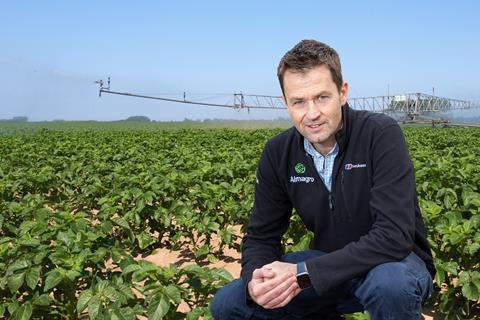Heat Stress Alert warns potato growers of local crop risks for Quantis timing
Potato growers can now get advance warning of the best time to apply Quantis biostimulant, to best tackle the effects of heat stress events.
The Quantis Heat Stress Alert website gives a clear 14-day forecast of risks for individual fields, along with the option to have specific alerts emailed direct, according to developer Syngenta.
Pulling together information from multiple weather sources, the forecast calculates pin-point local conditions for the coming 14 days, Syngenta said. Warnings would be triggered by periods of leaf temperatures in excess of 25⁰C for four hours a day - or extreme weather events over 30⁰C at any time in the day.
Information is displayed as a simple traffic light colour coding graphic - with green for no significant risk of a heat stress event; an amber for a potential heat event that may occur, or a red warning of timing to take positive action against an imminent heat event. An email alert would only be sent when a heat event warning was triggered.

Syngenta technical manager and biostimulant specialist, Andy Cunningham, said trials had repeatedly shown the greatest responses to Quantis occurred when it has been applied prior to a heat stress event.
“Once the alert comes through, if three consecutive heat parameters or near events are predicted, that is the optimum time to apply Quantis preventatively,” he advised, “ideally one to three days before the predicted stress event.
“The science of how Quantis works, to help plants cope with the stress induced effects of hot weather - by enhancing the production of antioxidants and osmoprotectant levels - has been well proven,” advised Cunningham.
“Now growers have a practical decision support tool to enable them to make best use of the benefits in season, with better timing of applications when they will have the greatest effect for final tuber size and overall yield.”
The Quantis Heat Stress Alert clearly shows accuracy bars for the level of confidence in the prediction. The closer to a heat event and the higher the accuracy score, the more confident growers can be of the heat stress occurring, he added.
“Growers and agronomists should also consider the crop growth stage at the time of the heat event,” advised Cunningham. “Potato crops appear most susceptible to heat stress from the onset of tuber initiation and through the bulking stages when the use of Quantis should be a priority. Research has shown that plant performance can begin to be adversely affected by temperatures as low as 15⁰C at times through this period.
“Such is the potato plant’s susceptibility to stress as stolons start to swell, to create tubers, that we would advise a routine application of Quantis to counter any abiotic stresses at that growth stage in all situations,” he recommended.
Farmers and agronomists can request the heat stress tool information on a field-by-field basis, or across any wider geographic area. Information can be displayed between a one to 14-day period.



